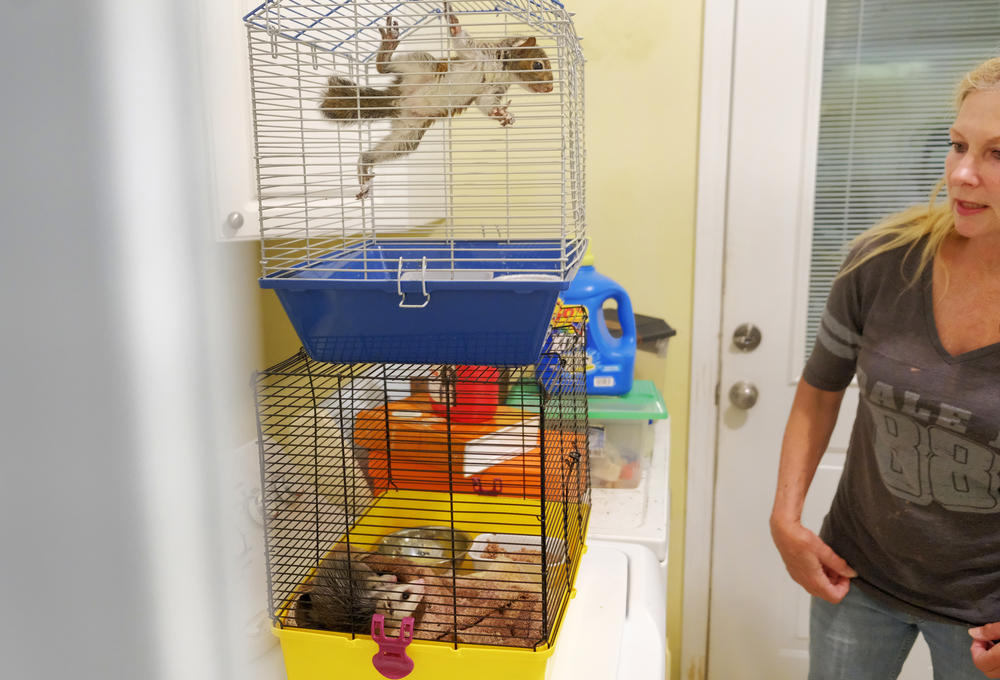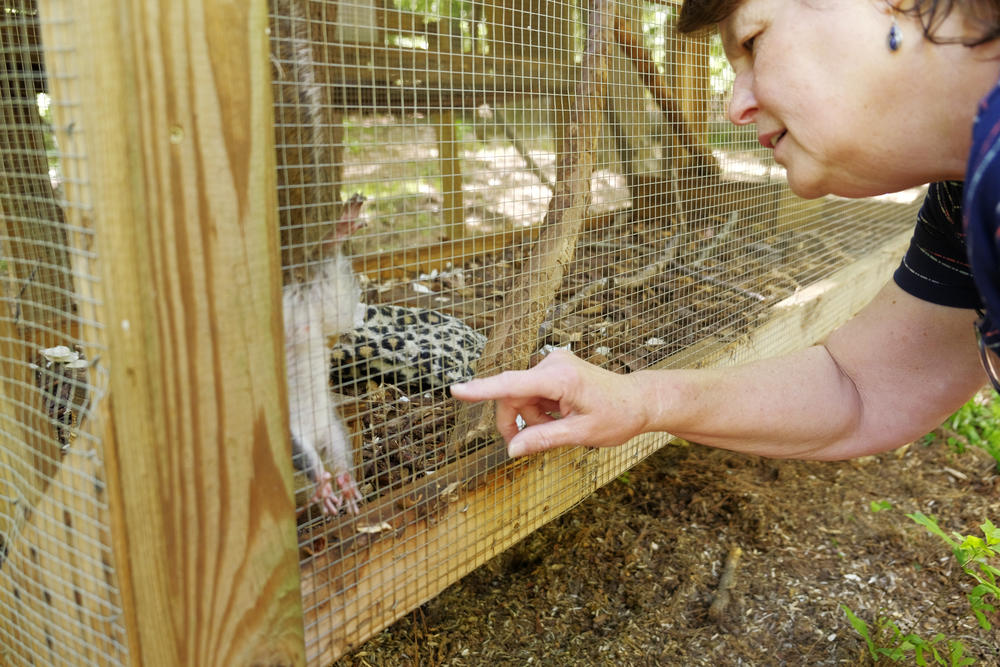Section Branding
Header Content
Baby Season Is Busy Season For Wildlife Rehabilitators
Primary Content
It’s springtime in Georgia. The weather is warming, gardens are blooming and animals, well, they’re having babies. Lots and lots of babies. Sometimes, those babies need help.
“It’s going to be non-stop this month,” wildlife rehabilitator Kim Wright said. She lives in the city of Byron.Baby Season Is Busy Season For Wildlife Rehabilitators
“You get phone calls all day long," Wright said. "I got a phone call last night about a baby bunny that was injured, and they wanted me to come get it last night at 10:30.”
Rehabilitators like Wright step in when nature doesn’t take its course. She’s part of a network of people like Luanne Brooker and her husband John, who are licensed by the Georgia Department of Natural Resources to take in injured or abandoned animals.
The Sandersville couple has had two squirrels living in a cage in their laundry room since they were 3 weeks old. They’ve been calling them Theodore and Brittney, and, recently, they moved to a larger enclosure outside. They weren’t happy about it.
As Luanne reached into the cage, Brittney retreated to a small fabric hammock.
“She’s not in her safety zone right now,” Luanne said. “I look different to her and if I get near her she growls and attacks.”
Luanne tried to comfort the anxious squirrel, “It’s okay, baby.”
Once outside, Brittney and Theodore settled in and explored their new enclosure surrounded by trees. It was the first time they had been outside since the tree where they were nesting was cut down.
Kim Wright is tending to several animals living in her laundry room, including five tiny bunnies who need care 24 hours a day. They are not alone.
“I’m just getting ready to feed again,” Wright said one weekday afternoon. “The bunny’s nest was destroyed, and their mom was killed. We’ve got two squirrels, two flying squirrels, a baby bird, and 19 possums.”
Wright also has three litters of kittens she’s fostering for an animal rescue organization. She said right now everything is having babies and in a few weeks baby fawns will start coming in.
“You’ve got April, May, June and July and it’s just crazy,” she said. “Then you’re taking care of them for months, weeks, and the fawns are a five-moth commitment before we go release them.”
Wayne Hubbard is the Special Permit Manager with the Georgia Department of Natural Resources. He manages licensing and inspection of wildlife rehabilitators across the state. He said one of the reasons rehabbers stay full at this time of year is human error. People come across animals and assume they are abandoned when they are not, especially in the case of fawns when their mothers are not nearby.
“They leave them in place, go off and feed, do their thing, come back and check on them and feed them from time to time during the day,” Hubbard said. “It’s normal for a fawn and other animals to be by themselves.”
Hubbard said another mistake people make is keeping the animals thinking they might make good pets. This also creates a situation where the animal becomes dependent on people and can never live in the wild. He said many of the animals can also carry diseases like rabies.
“Some of these animals can have the disease for a long time before you even know it,” Hubbard said, “and the health danger is there for everyone that comes in contact with them.”
Rehabbers who take care of bats, racoons, and any other animals that can get rabies are vaccinated. They pay for this and everything else out of their own pockets. They get no state funding.
Luanne Brooker said that can get expensive especially if the animals need to see a vet. And of course, these animals are growing, hungry and destructive in the case of squirrels.
“The milk’s $25 a can and then you’ve got to buy all the fruit to feed them, you’ve got to have your cages,” Luanne said.
She held up the corner of a hammock she bought this year for her squirrels: “I bought this this year because they tore up the one from last year…. oh this one’s torn up too!”
Once the animals are big enough, the Brookers release them on the land behind their Sandersville home. She said it was difficult when they first started out but now she’s used to it.
“The first time I let them go I thought, ‘Oh I don’t want to let you go!’ and they scurried up that tree and I looked at them and they were just as happy as they could be,” she said. “So, it makes it okay. I mean, they’re supposed to be wild and you raise them the best you can and hope they’ll be okay.”
Luanne and her husband John are working to get their fawn pen ready. Last year, they had eight staying with them and that season is just beginning.
The Georgia Department of Natural Resources says anyone who finds injured or abandoned wildlife can contact their office or one of the several wildlife rehabilitators listed on their website.




